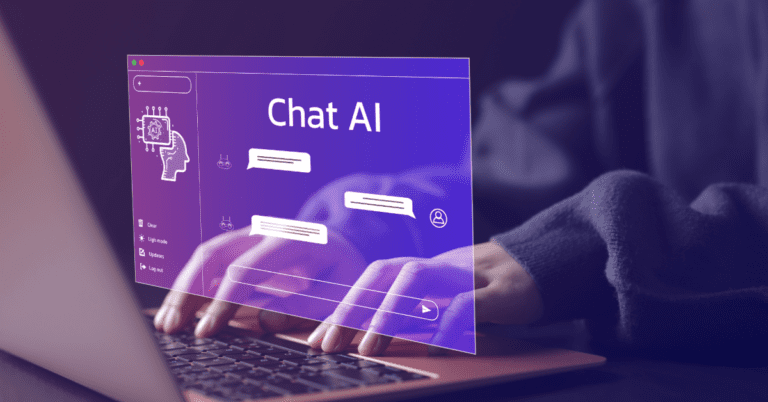
Can your enterprise leverage blockchain? The answer is very likely to be “probably not.” At least, not yet.
There are, however, historically intractable issues that a distributed ledger may help to address.
But first, it’s beneficial to use the following framework for evaluating challenges within your company or industry to determine if a Blockchain solution can help your enterprise to excel.
Things to know about leveraging Blockchain for your organization:
- Weaknesses of Relational Database Engines
- What is Blockchain?
- How is Blockchain Different from a Regular Data Repository?
- Challenges of Realizing Blockchain Benefits
- How to Determine if Blockchain is Viable for Your Organization
Weaknesses of Relational Database Engines
When MongoDB, Cassandra, Kafka and so many other projects emerged, they caused stress, confusion, and interest among technologists in almost equal measure. Why would you engineer something inherently flawed to represent information worth storing? Why were tables and columns not enough to represent all knowledge?
The truth is relational database engines contain several inherent weaknesses depending on the structure of the information being stored. The various repository alternatives (documents, wide columns, streaming) each sought to address those weaknesses for a particular set of use cases. Now, NoSQL technologies are essential to building a modern platform.
As with other new approaches to storing information, the blockchain technique seeks to overcome issues around trust between unrelated third parties without reliance on traditional security methods.
What is Blockchain?
In its simplest form, a blockchain is a process of record-keeping where computer nodes agree to perform a set of difficult math problems prior to adding an entry to a ledger. In some cases, the nodes are managed by a single entity and satisfy the processing for a single purpose.
In other scenarios- such as executing Ethereum contracts- public transparency and a system of rewards allows any machine to join. For a deeper understanding, there are resources ranging from flashcards to foundations.
How is Blockchain Different from a Regular Data Repository?
A regular data repository has the goal of increasing scale by reducing the friction of each transaction. This allows for the inexpensive accumulation of large data sets.
A blockchain extends the idea of a ledger by adding a software layer that any computer can execute during the process of the transaction, using computational effort as a proxy for value. The value of the ledger should correspond to the difficulty of the math problems. The recording of the transactions is almost as important as the information itself – like a real ledger.
In other words, blockchains are not just simple stores of information. The focus on trust and transparency results in an inverted view of security. Instead of building systems and processes to manage access, a shared concern is intended to ensure accuracy and immutability. If the entry point (a wallet address, for instance) cannot be falsified or connected to the subject of the data, anonymity is maintained while accuracy is authoritative.
As one academic project provides, identifying someone can be shockingly easy using a small number of data points, so there are now private blockchains with more traditional permissions added. The core idea remains the same. When creating a record comes with a cost, only entities with concrete interests will participate.
Challenges of Realizing Blockchain Benefits
Many supporters of blockchain technology believe this is of unique and intrinsic value- and I agree- but there are also unique impediments that make realizing actual benefit very difficult. This has led to “solutions in search of a problem.”
In very general terms, I believe this is due to two fundamentally flawed assumptions:
- Complete data accuracy is both possible and a goal worthy of tremendous energy
- Transactions between a blockchain and the rest of the world can be transparent, frictionless, and useful.
There are scenarios that rise to this level, but not as many at this time as proponents may believe.
How to Determine if Blockchain is Viable for Your Organization
Within this tremendous potential of Blockchain, there should still be a method for evaluating the technology’s current state for the potential to benefit an enterprise or an industry. Some guidelines to consider when deciding if Blockahin is right for your business are:
- There should be more value in transparency than advantage in secrecy
- Each transaction must be substantially valuable
- Sources of information must be verifiable and authoritative
- The context of the transaction should present unique challenges
Blockchain guideline #1: There should be more value in transparency than advantage in secrecy
A key to the blockchain ethos is power to the individual entity over systems. There exist many areas where people want greater transparency- campaign contributions, salaries in job postings, the right to repair devices- but asymmetry of information is often a feature, not a bug.
While many centralizing systems exist only to charge fees for outdated processes that are required to run on old technologies, public cloud vendors have centralized data centers in ways that have transformed what is possible with software.
In between those extremes are education credentials. While still perpetually in the ideation phase, the ability to attach a unit of learning (course completion, high school transcript, college degree) to a verifiable identity would remove many challenges. Each verified high school or college transcript that schools or employers require comes with a fee and a process that can take days or weeks.
Credit attainment is far more valuable to the learner than the institution. If schools were required to create a portable record in a common ledger, a simple but important barrier to equity could be removed.
One could easily imagine other areas where a portable demonstration of competence (professional licensure, field technicians, coaches in youth sports) currently handled through paper could be improved by adopting a digital record.
Fundamentally, we are looking for places where trust between parties cannot be achieved by other means.
Blockchain guideline #2: Each transaction must be substantially valuable
I am a firm believer in the advance of technology, but climate-impacting levels of computer processing need a sound justification. The mechanical issues can be addressed over time, but blockchains present many individual challenges that, taken in aggregate, must be worth the effort.
Even though more projects fail than succeed, crowd-sourcing mechanisms carry both tangible and intangible benefits that cause people to assume the risk. “Substantial value” is difficult to calculate but considering the wide variety of options to bring people and capital together these days, there should be a high hurdle for introducing a blockchain to the equation.
A current project called PharmaLedger provides an example of this. Every pill prescribed and consumed comes with unique value that is created by a chain of market participants.
Counterfeiting produces an economic impact, but more importantly, fake pharmaceuticals create health risks for patients. Being able to effectively document the provenance of pills may be addressable with a blockchain.
Blockchain guideline #3: Sources of information must be verifiable and authoritative
While most of the anxiety regarding distributed ledgers has focused on crime- the ability to pay for something illegal from a distance while maintaining anonymity- most scenarios for blockchain seek a new avenue for trust. That could be the trust that a party has enough funds to complete a transaction, but the more unique need is trust that what is being delivered will satisfy the cost.
Many existing marketplaces meet this need by virtue of brand or scale. Shopping online with a known retailer ensures a consumer will receive the purchased product as presented. If that does not happen, refund and return policies add assurance. Early e-commerce was fueled as much by hope and caveat emptor as truly improving the shopping experience, but consumers continued to assume the risk and insist on progress.
A blockchain carries the potential for a version that does not require a third-party market maker to provide that level of assurance, by only allowing transactions between credible actors.
Blockchain guideline #4: The context of the transaction should present unique challenges
This may seem like a large loophole that invalidates the other guidelines, but many parts of the world face conditions that technologists often do not consider. This can range from severe bandwidth constraints to political instability. Geography is not a unique challenge, but a lack of access to a sound banking system is.
Even with a handful of guardrails, many of the dominant uses, including NFTs, Web3, and many fintech projects, are quickly excluded. Meanwhile, the availability of a digital currency in parts of the world with economic volatility remains a valid need.
Explore Blockchain & Technology Solutions
There are truly difficult problems where a boundless network of machines all working on known math problems may present unique solutions. Examples include secondary markets for expensive goods, education credentials, waste stream accounting, and traceability of global trade.
Not coincidentally, these are also areas where industry, political, and practitioner groups routinely come together and create reports, protocols, and standards.
At AIM Consulting, we seek to understand the “why” before prescribing a solution. If you are facing these types of questions, enlisting support from our technology experts can aid your exploration of cloud, blockchain, DevOps, and other ways to make your enterprise strategy real.
AIM has the capabilities to bring new technology to life with a thoughtful approach to ensure you are on the right path. We’ve implemented design, organization, and technology solutions for numerous Fortune 500 companies and have the experience to help you start overcoming your challenges.
Need Help Determining if a Blockchain Solution is Right for Your Organization?
We leverage our deep expertise in technology and passion for empowering our clients’ growth and success to help companies tackle their most challenging projects. Let’s accomplish your goals together.




